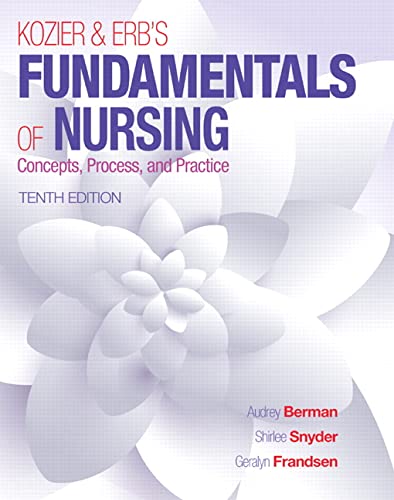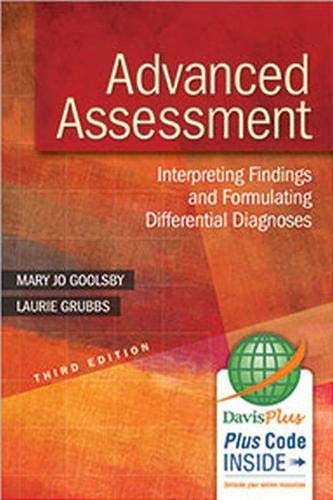Test Bank for Basic and Applied Concepts of Blood Banking and Transfusion Practices 4th Edition by Howard
MULTIPLE CHOICE
- Which of the following agencies administers the Clinical Laboratory Improvement Amendments?
- AABB
- Centers for Medicare and Medicaid Services
- OSHA
- Food and Drug Administration
ANS: B
The Centers for Medicare and Medicaid Services administers CLIA, Medicare, Medicaid, and HIPAA.
DIF: Level 1 REF: p. 3
- A laboratory technologist decided she would like to bring her lab coat home for laundering because it had too many wrinkles when returned by the laboratory’s laundry service. Is this practice acceptable?
- Yes, if she uses 10% bleach
- Yes, if she clears it with her supervisor
- Yes, as long as she removes the coat and does not wear it home
- No, because the laboratory is a biosafety level 2, and lab coats may not be removed
ANS: D
Methods of transporting the lab coat and the risk of contamination do not permit healthcare workers to bring lab coats home for cleaning.
DIF: Level 2 REF: p. 14
- Personal protective equipment includes:
- safety glasses.
- splash barriers.
- masks.
- All of the above
ANS: D
Safety glasses, splash barriers, and masks are types of personal protective devices.
DIF: Level 1 REF: p. 14
- At what point in the employment process should safety training take place?
- During orientation and training
- Following lab training when employees are more familiar with their responsibilities
- Following the employees’ first evaluation
- Before independent work is permitted and annually thereafter
ANS: D
The Occupational Safety and Health Administration requires safety training before independent work is permitted and annually thereafter.
DIF: Level 1 REF: p. 17
- In safety training, employees must become familiar with all of the following except:
- tasks that have an infectious risk.
- limits of protective clothing and equipment.
- the appropriate action to take if exposure occurs.
- how to perform cardiopulmonary resuscitation on a donor or other employee.
ANS: D
The Occupational Safety and Health Administration requirements include all of those listed except cardiopulmonary resuscitation.
DIF: Level 1 REF: p. 13
- Blood irradiators require all of the following safety procedures:
- proper training.
- that the user has a degree in radiology.
- equipment leak detection.
- personal protective equipment.
ANS: B
The blood bank and transfusion service technologists require training but not a degree to use a blood irradiator.
DIF: Level 2 REF: p. 16
- Which of the following is true regarding good manufacturing practices (GMPs)?
- GMPs are legal requirements established by the Food and Drug Administration.
- GMPs are optional guidelines written by the AABB.
- GMPs are required only by pharmaceutical companies.
- GMPs are part of the quality control requirements for blood products.
ANS: A
Good manufacturing practices are requirements established by the Food and Drug Administration.
DIF: Level 1 REF: p. 5
- Which of the following is an example of an unacceptable record-keeping procedure?
- Using dittos in columns to save time
- Recording the date and initials next to a correction
- Not deleting the original entry when making a correction
- Always use permanent ink on all records
ANS: A
All records must be clearly written. Dittos are unacceptable.
DIF: Level 1 REF: p. 7
- A technologist in training noticed that the person training her had not recorded the results of a test. To be helpful, she carefully recorded the results she saw at a later time, using the technologist’s initials. Is this an acceptable procedure?
- Yes; all results must be recorded regardless of who did the test.
- No; she should have brought the error to the technologist’s attention.
- Yes; because she used the other technologist’s initials.
- Yes; as long as she records the result in pencil.
ANS: B
This is an example of poor record-keeping; results must be recorded when the test is performed and by the person doing the test.
DIF: Level 3 REF: p. 8
- Unacceptable quality control results for the antiglobulin test performed in test tubes may be noticed if:
- preventive maintenance has not been performed on the cell washer.
- the technologist performing the test was never trained.
- the reagents used were improperly stored.
- All of the above
ANS: D
Training, equipment maintenance, and reagent quality can affect quality control.
DIF: Level 2 REF: p. 5
- All of the following are true regarding competency testing except:
- it must be performed following training.
- it must be performed on an annual basis.
- it is required only if the technologist has no experience.
- retraining is required if there is a failure in competency testing.
ANS: C
All employees must have competency testing following training and annually thereafter. If there is a failure in competency testing, retraining is required.
DIF: Level 2 REF: p. 10
- Which of the following organizations are involved in the regulation of blood banks?
- The Joint Commission
- AABB
- College of American Pathologists
- Food and Drug Administration
ANS: D
The Food and Drug Administration regulates blood banks, whereas other organizations are involved in accreditation.
DIF: Level 1 REF: p. 2
- All of the following are responsibilities of the quality assurance department of a blood bank:
- performing internal audits.
- performing quality control.
- reviewing standard operating procedures.
- reviewing and approving training programs.
ANS: B
Quality control is performed in the laboratory, not by the quality assurance department.
DIF: Level 2 REF: p. 5
- The standard operating procedure is a document that:
- helps achieve consistency of results.
- may be substituted with package inserts.
- is necessary only for training new employees.
- must be very detailed to be accurate.
ANS: A
Standard operating procedures are written procedures that help achieve consistency and should be clear and concise.
DIF: Level 2 REF: p. 8
- Employee training takes place:
- after hiring and following the implementation of new procedures.
- following competency assessment.
- only for new inexperienced employees.
- as procedures are validated.
ANS: A
Training occurs with all new employees regardless of their experience and following the implementation of new procedures.
DIF: Level 1 REF: p. 10
- Plans that provide the framework for establishing quality assurance in an organization are:
- current good manufacturing practices.
- standard operating procedures.
- change control plan.
- continuous quality improvement plan.
ANS: D
The total quality management or continuous quality improvement plan is part of the quality assurance program in an organization.
DIF: Level 1 REF: p. 4
- A facility does not validate a refrigerator before use. What is a potential outcome?
- The facility is in violation of current good manufacturing practices and could be cited by the Food and Drug Administration.
- The facility is in compliance if the equipment functions properly.
- The facility is in compliance if the blood products stored in it are not transfused.
- The facility is in violation of AABB and may no longer be member.
ANS: A
Validation of equipment is a current good manufacturing practice, which is a legal requirement established by the Food and Drug Administration.
DIF: Level 2 REF: p. 12
- In a routine audit of a facility’s blood collection area, the quality assurance department found that the blood bags used on that particular day had expired. What is the appropriate course of action?
- Initiate a root cause analysis and quarantine the blood collected in the expired bags.
- Call the Food and Drug Administration to report the incident.
- Change the expiration date on the bags to avoid legal issues.
- Fire the donor room supervisor, and discard the blood collected in the expired bags.
ANS: A
A root cause analysis will determine the factors that contributed to the error and result in a plan to prevent further errors.
DIF: Level 3 REF: p. 11
- Several units were released to a hospital by mistake before all viral marker testing was completed. What is the appropriate course of action?
- The error is reportable, and the Food and Drug Administration must be contacted.
- Ask the hospital to avoid transfusion and quickly complete the testing.
- Perform a root cause analysis and, if the units are found to be negative, report the test result to the hospital.
- Recall only the units that are positive for viral markers.
ANS: A
The release of untested units is a reportable error to the Food and Drug Administration.













